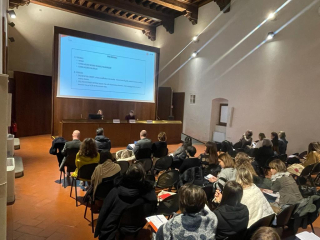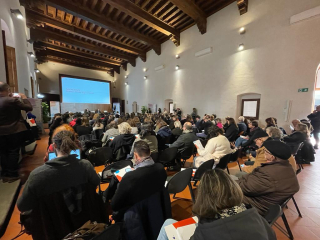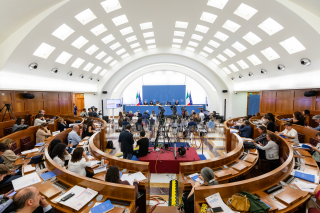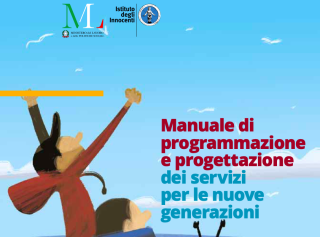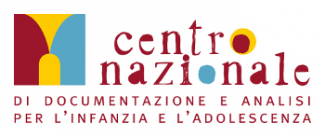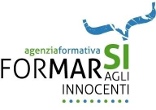Adoptions: Almost Always Success Stories.Adoption crises account for 3% of international adoptions.
The conclusions of ‘Crises in Adoption in Italy’, a survey that saw the participation of 24 of Italy's 29 Juvenile Courts. The survey was promoted by the Commission for Intercountry Adoption (CAI) and carried out with the scientific assistance of the Inst
15 December 2022
Area di attività

L'apertura del seminario di presentazione ''La crisi nei percorsi adottivi in Italia''
The survey involved 24 of Italy's 29 Juvenile Courts, equally distributed among all areas of the country for a total of 725 files that were studied, analysed and catalogued. It is also for this reason that the Vice-President of the Commission for Intercountry Adoption, Vincenzo Starita, in presenting it, clearly stated that "the national dimension of the research is, to date, unique in the international scene". However, ‘Crises in Adoption in Italy’, the first survey among Italy's Juvenile Courts, promoted by CAI itself and conducted with the technical and scientific assistance of the Istituto degli Innocenti, is much more. First of all, because of the approach that was adopted, since the research is based on the analysis of the documents on adoption crises belonging to the Juvenile Courts themselves. And then, for the subjects involved. There is no doubt that CAI and the Scientific Committee of the research project, supported and sustained by the Institute's researchers, played a key role. However, the willingness of the Presidents of the Courts that joined the project and the involvement of the honorary judges, directly engaged in the identification and study of individual files, were decisive.
The Methodology: A Model to Monitor Adoption Crises
The methodology that was adopted was also peculiar as it is potentially able to open up the innovative prospect of having a tool capable of monitoring the phenomenon even on an annual basis, as it is based on the use of Sigma, the automated information system of juvenile justice. "This work has brought about an initial remarkable result when recording cases: the definition of a new and original statistic that, on the basis of pertinent data extracted in the 29 Juvenile Courts, could potentially make it possible to keep the number of adoption crises up to date on an annual basis while allowing the calculation of the incidence of this phenomenon," explained Enrico Moretti, statistician at the Istituto degli Innocenti, yesterday morning in the Brunelleschi Hall of the headquarters of the Institute in Piazza Santissima Annunziata, during the public presentation of the research report.
The Presentation
Hence the attention received by the presentation of the survey, with the Brunelleschi Hall packed with scholars and practitioners and some of the leading experts in the field taking turns at the speaker's table. Proceedings were opened by the Chairwoman of the Istituto degli Innocenti, Maria Grazia Giuffrida, the Vice-President of the CAI, Vincenzo Starita, and the Principal Legal Officer of the Hague Conference, Laura Martinez Mora. Their speeches were followed by the contributions of Laura Laera (CAI), Luca Villa (President of the Juvenile Court of Genoa), Raffaella Pregliasco, Enrico Moretti and Giorgio Macario (Istituto degli Innocenti), Jesus Palacios (University of Seville), Leonardo Luzzatto (Asl Roma 2), Monya Ferritti (Chairwoman of Care Coordination), Chiara Avataneo (Authorised agency of the regional service for international adoptions of the Piedmont Region), Carla Luisa Miscioscia (Ciai Onlus) and Paola Popolla (Honorary Judge of the Juvenile Court of Rome).
Definition of Adoption Crisis
To achieve the objective that had been set, it was essential, first of all, to circumscribe the analysis by coming up with a definition of ‘adoption crisis’ that was both analytically correct and compatible with the acts within the jurisdiction of the Juvenile Courts. "The cases that were investigated were identified among international and national adoptions of minors who, in the five years between 2014 and 2018, had been removed from their families or whose adoptive parents had lost parental responsibility or other measures had been taken to protect them or support their families," explained the Institute's researcher Raffaella Pregliasco. A clear definition, therefore, that was subsequently divided into three different profiles relating to the seriousness of the adoption crisis: the highest level of seriousness (high) concerns children whose parents had lost parental responsibility. Adoption crises of medium severity, on the other hand, are those involving children with parents who have had their parental responsibility restricted, with or without their removal from the family residence. Lastly, low severity crises identify those for whom: 1) home education has been mandated, 2) referrals to social or other social/health services for guidance and support (such as Child Neuro-psychiatry, Sert (Public services for addictions) and Psychology Operational Unit) have been requested, 3) court orders involving one or both parents have been issued, and 4) orders and directives involving the child have been emanated.
Adoptions: Almost Always Success Stories.
Accurate methodology and rigorous design of analysis tools have made it possible, first of all, to provide a quantitative dimension of adoption crises. They have also led researcher to write in their conclusions to the survey that "adoption paths are almost always success stories. Confirmation comes to us from the incidence of crises which affect an average of three international adoptions for every one hundred. Nevertheless, it must be pointed out that the figure refers only to that portion of the phenomenon that goes through the courts, effectively cutting out those latent or manifest crises managed by national and local social and health services". The incidence of adoption crises in national adoptions is even lower at 1.4%.
Age at Adoption, Adolescence and Siblings. Risk Factors.
However, the survey also highlighted some of the main risk factors that can potentially lead to an adoption crisis. First of all, age at adoption: on average, foreign children whose adoption relationship goes into crisis were adopted at the age of 7.9 years, two years older than all children involved in international adoptions. "The greatest risks are potentially related to the problems children and young people have which, on average," the researchers write, " have most certainly been experienced for much longer in the case of adoption crises, and also to the difficulties of the adoptive parents to fully cope with these problems.”
Adolescence is the time of life when a crisis can break out: data from the survey, in fact, clearly show that the average age of the child at the first international adoption crisis is 14.1 years.
Finally, siblings: more than half of those facing an adoption crisis are adopted together with other minors, almost always biological brothers and sisters. "The presence of siblings as an accelerator of a crisis is much discussed in the literature and highlights," the researchers explain in the conclusions, "the need for services to take into account the relationships among siblings, whether biological or acquired, and manage the entire family unit, not just the critical parent-child dyad".
Last update: 03/03/2023 - 16:55

